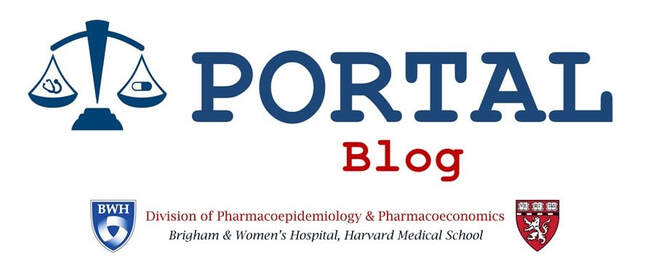|
Richard G. Frank, Jerry Avorn, Aaron S. Kesselheim Editorial Note: Prescription drug spending in the United States continues to increase. A new report from IQVIA titled "Medicine Spending and Affordability in the U.S.: Understanding Patients’ Costs for Medicines" was published earlier this week, providing an updated snapshot of just how high drug costs can be for various stakeholders, including patients. One key finding was that “a record $67 billion was paid out-of-pocket by patients for all prescriptions filled in retail pharmacies in 2019, up from $61 billion in 2015.” The report also notes that patients with higher out-of-pocket costs more frequently abandon their new prescriptions. What do high drug prices buy us, anyway? In April, PORTAL researchers co-authored a Health Affairs blog post which seeks to answer that question. US patients pay far more for the same brand-name drugs than do patients in other affluent countries; these prices are often well out of proportion to the clinical benefits they offer. Recent legislation passed by the House of Representatives would give the federal government the authority to negotiate prices on a modest number of costly brand-name medications, based on factors such as the drug’s effectiveness, the adequacy of alternative treatments, and market size. The Congressional Budget Office has estimated that such negotiation would reduce taxpayer spending on prescription drugs by about $456 billion over 10 years. The pharmaceutical industry has strongly opposed these proposals, making its common objection that they would diminish the incentive to innovate and thereby deprive Americans and the world of access to new cures. The industry’s argument can be summarized as follows: Government should not be involved in limiting what taxpayers and consumers pay for drugs because doing so would lead to less innovation, which would lead to fewer new drugs, which would ultimately put the health of the public at risk. In effect, the industry is administering its own national innovation premium, arguing for its necessity to promote the health of the public. But, having paid that premium for decades now, what do we actually get for it? What do high drug prices buy us? Answering these questions can help provide a more evidence-based assessment of the effects of thinking about the problem in this way. Other Nations Assess the Likely Clinical Impact of Drugs We evaluated all 46 new drugs approved in the United States during the year 2017. Specifically, we considered them in light of the appraisals of their likely clinical impacts conducted by three national health technology assessment agencies outside the US: those in Canada, Germany, and France. The US has no government-funded organization with a mandate or resources to make such assessments for use by patients and their physicians. But a number of industrialized nations systematically assess the therapeutic benefit likely to result from each new medication proposed for inclusion in their health care systems, as part of their standard drug approval and reimbursement processes. These assessments are performed by independent groups of scientists and clinicians based on clinical trials, observational outcome data, consideration of drugs already on the market to treat the same conditions, and the experiences of other nations with a given product. The determinations are made without regard to the drugs’ costs; they are simply an assessment of their benefit to patients, compared to available treatments. Each of the countries whose assessments we used take a slightly different approach: The Canadian Patented Medicine Prices Review Board classifies the incremental benefit of each new drug as conferring one of five levels of improvement: “breakthrough,” “substantial,” “moderate,” “little,” or “no” improvement. In France, the Transparency Committee of the government’s National Authority for Health routinely assesses the medical benefit of recently approved drugs on a four-point scale: “none,” “minor,” “moderate,” or “important.” In Germany, the Institute for Quality and Efficiency in Health Care is an independent nonprofit institute that evaluates the comparative effectiveness of medical interventions. It produces a report that informs the government’s assessment of whether a new drug offers patients “major added benefit,” “considerable added benefit,” “minor added benefit,” “nonquantifiable added benefit” (a category used if, for example, the underlying evidence appears biased or decision uncertainty is high), “no evidence of added benefit,” or less benefit than the appropriate currently available comparator(s). Forty-Six New Drugs For all 46 new molecular entities (NMEs) approved by the Food and Drug Administration in 2017, we reviewed the assessments of each made by these national health care technology assessment bodies (see exhibit 1).
Of the 17 new drugs expected to offer few if any additional benefits to patients above what was available with existing treatments, many are extremely costly. More than two out of every five new medications have not yet been evaluated by any of these three national assessment programs. That could be because the drug has not been approved by the European Medicines Agency or, for drugs such as deflazacort, have been available outside the US for many years. Many of the new products that were assessed (such as glecaprevir-pibrentasvir for vital hepatitis infection, or semaglutide for type 2 diabetes) are highly effective but represent second- or third-in-class products that offer little clinical benefit over their predecessors in the class. It is reasonable to offer some incentives for such products, to offer options for patients who cannot tolerate the first-line product, or to encourage competition, even though price competition among comparable brand-name products in the US has historically been quite limited. Together, this information raises the question of how effectively the existing “innovation premium” imposed by the pharmaceutical industry is yielding gains for patients or the public’s health. Furthermore, if the government negotiated for prices based on a drug’s real advantage over existing products, it could provide a better incentive for more useful innovation as well as improve the affordability of prescription drugs. Would such a policy lead to the development of more drugs that truly advance patients’ health, as well as address the growing problem of the affordability of new medications? To fairly answer these questions, it is time to think about what the US innovation premium buys. Exhibit 1: Drugs approved in the US in 2017 and the outcomes of their clinical reviews in Germany, France, and Canada Source: Authors’ compilation from corresponding agencies. Notes: * Determinations different for indicated population subgroups for brodalumab (for patients with inadequate response to systemic therapy or contraindicated/intolerant to it, in light of the “assumptions were made for both approaches in order to take into account the very high proportion of values to be replaced”) and emicizumab (for patients with bypassing agent “due to uncertainties regarding the appropriateness of the treatment regimens used”). All assessments are for indications at the time of European approval/market entry. Comments are closed.
|
AuthorPORTAL Blog posts are authored by PORTAL faculty, trainees, and collaborators. Archives
January 2022
Categories |
|
Program On Regulation, Therapeutics And Law (PORTAL)
Division of Pharmacoepidemiology and Pharmacoeconomics 1620 Tremont Street, Suite 3030 Boston, MA 02120 |





 RSS Feed
RSS Feed
